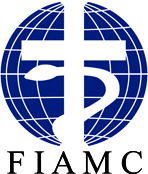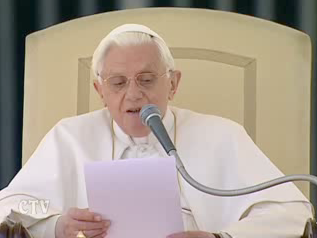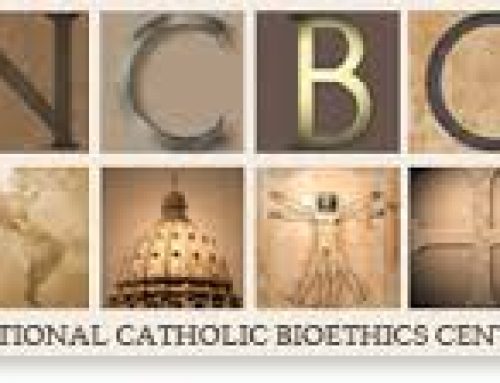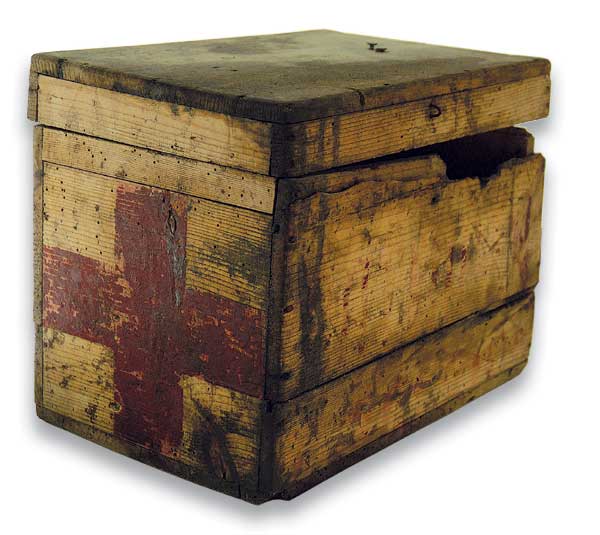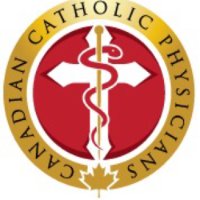…………………………………………………
http://lq.cathmed.metapress.com/content/l605182n66097846/fulltext.pdf
Protecting ALL the Innocent in the Sexual Abuse Crisis
April 13, 2011
In seeking to end the scourge of sexual abuse in the Church, it is essential to protect the innocent from sexual predators as well as to protect the innocent from false accusations. Church leaders have made significant progress on the former, but at times show too little regard for the latter, as CMA members Richard Fitzgibbons, M.D. and Peter Kleponis have demonstrated regarding events in Philadelphia. Since sexual abuse is widely recognized as a grave sin and a crime, it is all the more necessary to ensure that the reputations – and the very lives – of innocent men and women are not undermined by misunderstandings, let alone false accusations.
Fulfilling these duties to all innocent parties is rendered more difficult in our society by the unjust coverage by the major media of failures within the Church. This bias is not only unfair, but counter-productive, as it undermines the prevention and punishment of sexual abusers in other segments of our society. Those who distort the truth and turn a blind eye to other sectors in which sexual abuse takes place are enabling the very behaviors they claim to condemn.
All people of good will, both within and outside the Church, should accept nothing less than the highest standard of effectiveness in preventing sexual abuse, and the highest standard of justice regarding the innocent. To be effective, we must have the courage to identify and neutralize the key drivers of sexual abuse. To be just, we must be willing to protect both innocent children and innocent priests. To do any less is an inexcusable failure of charity and justice.
————————————————-
Pubblichiamo di seguito l’intervento tenuto questa mattina dal Capo Delegazione della Santa Sede al Comitato che oggi esamina a Ginevra il Rapporto presentato dalla Santa Sede sull’applicazione della Convenzione sui Diritti del Fanciullo:
● S.E.R. MONS. SILVANO TOMASI, HEAD OF HOLY SEE DELEGATION
Madame Chairperson, Members of the Committee,
At the time of the ratification in 1990, the Holy See made the following declaration.
“The Holy See regards the present Convention as a proper and laudable instrument aimed at protecting the rights and interests of children, who are ‘that precious treasure given to each generation as a challenge to its wisdom and humanity.”
“By acceding to the Convention on the Rights of the Child, the Holy See intends to give renewed expression to its constant concern for the well-being of children and families. In consideration of its singular nature and position, the Holy See, in acceding to this Convention, does not intend to prescind in any way from its specific mission which is of a religious and moral character.”
The protection of children remains a major concern for contemporary society and for the Holy See. The UN report on Violence Against Children, issued in 2006, cited shocking WHO estimates that 150 million girls and 73 million boys under 18 “experienced forced sexual intercourse and other forms of sexual violence involving physical contact”.1 Even if they contain a significant margin of error, these estimates should never be ignored nor overshadowed by other priorities or interests on the part of the international community. Moreover, this estimate does not include projections on the number of victims of child labour and child trafficking, whether for sexual exploitation, forced work, sale of organs, and other shameful reasons. Although little is known about the magnitude of the problem, the International Labor Organization, in 2002, estimated that there were 1.2 million children being trafficked each year2.
Abusers are found among members of the world’s most respected professions, most regrettably, including members of the clergy and other church personnel3. This fact is particularly serious since these persons are in positions of great trust and they are called to levels of service that are to promote and protect all elements of the human person, including physical, emotional, and spiritual health. This relationship of trust is critical and demands a higher sense of responsibility and respect for the persons served.
Confronted with this reality, the Holy See has carefully delineated policies and procedures designed to help eliminate such abuse and to collaborate with respective State authorities to fight against this crime. The Holy See is also committed to listen carefully to victims of abuse and to address the impact such situations have on survivors of abuse and on their families. The vast majority of church personnel and institutions on the local level have provided, and continue to provide, a wide variety of services to children by educating them, and by supporting their families, and by responding to their physical, emotional, and spiritual needs. Egregious crimes of abuse committed against children have rightly been adjudicated and punished by the competent civil authorities in the respective countries.
Therefore, the response of the Holy See to the sad phenomenon of the sexual abuse of minors has been articulated in different ambits.
On the level of the Holy See, as the Sovereign of Vatican City State, the response to sexual abuse has been in accord with its direct responsibility over the territory of Vatican City State. In this regard, special legislation has been enacted to implement international legal obligations, and covers the State, and its tiny population4.
On the international level, the Holy See has taken concrete action by the ratification of the Convention on the Rights of the Child in 1990. In 2000, the Holy See acceded to the Optional Protocol on the Sale of Children, Child Prostitution, and Child Pornography, as well as the Optional Protocol on the Involvement of Children in Armed Conflict. The Holy See then promotes and encourages these international instruments.
At the same time, the Holy See as the central organ of the Catholic Church has formulated guidelines to facilitate the work of the local Churches to develop effective measures within their jurisdiction and in conformity with canonical legislation.
Local Churches, taking into account the domestic law in their respective countries, have developed guidelines and monitored their implementation with the aim of preventing any additional abuse and dealing promptly with it, in accordance with national law whenever it occurs. Reference to examples of such measures by local Churches are cited in paragraph 99 of the Holy See Periodic Report. For example, the Catholic Church in the United States adopted a Charter for the Protection of Children and Young People and a series of related measures 5. Other practical initiatives have been undertaken, for example the production of e-courses by the Pontifical Gregorian University in Rome together with the University of Munich and the promotion of good practices by Catholic-inspired NGO’s, and these have a transnational accessibility.
The result of the combined action taken by local Churches and by the Holy See presents a framework that, when properly applied, will help eliminate the occurrence of child sexual abuse by clergy and other church personnel. Given the unique standing of the Holy See within the international community, and the presence of the local Churches in so many parts of the world, the Catholic Church is keen to become an example of best practice in this important endeavour as required by the high values and ideals incorporated in the Convention and its Protocols.
The Holy See’s Periodic Report on the CRC is divided into four Parts: Part I deals with general considerations, including the nature of the Holy See as a subject of international law. Part II responds to the concluding observations of the Committee to the Holy See’s Initial Report, and, in particular, questions concerning reservations; the Committee’s four principles and the duties and rights of parents, the education of girls, education about health, and education on the CRC. The Holy See also discusses the principles it promotes concerning the rights and duties of the child within the context of the family. Part III presents the international contributions of the Holy See in advancing and promoting basic principles recognized in the CRC on a full range of issues pertaining to children (e.g., the family, adoption, children with disabilities; health and welfare; leisure and culture; and special measures to protect children, including questions pertaining to sexual abuse, drug addiction, children living on the streets and minority groups). Finally, Part IV addresses the implementation of the Convention in Vatican City State.
Today’s meeting constitutes an important opportunity to thank the Committee for its questions. The Written Replies include new information about the Holy See’s initiatives concerning the promotion of essential principles regarding child victim assistance and child safe-environment programs.
The Holy See’s Initial Report on the OPSC is divided into six Parts. Part I gives a brief introduction including a discussion about the Committee’s Reporting Guidelines. Parts II and III explain the nature of the Holy See and reiterate the Holy See’s three reservations and declaration to the CRC. Part IV discusses the contributions of the Holy See in affirming the rights of the child through the speeches and addresses of the Holy Father, directed to all persons of good will, believers and non-believers alike. Part V discusses the Holy See’s international activities. Finally, Part VI addresses the implementation of OPSC in Vatican City State. TheWritten Replies, offer updated information on the implementation of the OPSC in Vatican City State, including the amendments of its penal laws to define and criminalize the sale of children, child prostitution and child pornography as well as other crimes mentioned in the OPSC. Since the time of the submission of the Written Replies, a citizen of Vatican City State has been placed under investigation for alleged sexual crimes committed against children outside the territory of the Vatican City State.
The Holy See’s Initial Report on the OPAC is divided into four Parts. Part I contains an introduction giving basic information about ratification and other matters. Parts II and III discuss the role of the Holy See and present considerations regarding the CRC including the reservations, declaration and seven basic principles of policy of the Holy See regarding children. Part IV gives an overview of the statements and activities of the Holy See which affirm the rights of the child and the principles set out in OPAC as regards prevention, prohibition, protection, recovery and reintegration. The Holy See’s Report on OPAC contains little information about Vatican City State since there are no armed forces, within the technical meaning of the term, but a body of guards (the Swiss Guards), who protect the Pope, and a body of police (Corps of Gendarmes), who guarantee the public order of this State.
The Reports, as previously mentioned, also articulate seven key principles which the Holy See promotes as an authentic perspective of the rights and duties of the child according to international law. They may be articulated as the following: 1) the child has inherent dignity as a human being and human person from the moment of conception until natural death; 2) the child’s rights and duties must be viewed within the context of the family; 3) full respect of the child’s rights and duties require special protection and promotion of the family’s rights and duties; 4) the child’s well-being is the primary responsibility of his or her parents and family; and 5) the child has rights and duties with respect to the protection of his or her own life and parents have co-relative duties and rights to safeguard the child’s life, from the moment of conception until natural death; 6) the child has a right and duty to be educated and parents have corresponding duties and rights to educate the child; and 7) the child has rights and duties concerning religious freedom taking into consideration the parents’ duties and rights to educate their child according to their own moral and religious beliefs.
Various institutions of the Catholic Church around the world have been engaged in assuring a broad range and scale of vital social, health, and educational services, thereby accompanying families to form and protect children. One need only think, for example, of the network of Catholic schools, from elementary to secondary to higher education levels, sponsored by Catholic religious orders, and dioceses, and local parishes, that provide vital formal and informal education to more than 50 million children worldwide, often delivered in rural areas and among marginalized populations.6
In the end, there is no excuse for any form of violence or exploitation of children. Such crimes can never be justified, whether committed in the home, in schools, in community and sports programs, in religious organizations and structures. This is the long-standing policy of the Holy See. For example, Pope John Paul II stated that abuse of young people is “by every standard wrong and rightly considered a crime by society; it is also an appalling sin in the eyes of God”7. For this reason, the Holy See, and local Church structures in all parts of the world, are committed to holding inviolable the dignity and entire person of every child – body, mind, and spirit.
Pope Benedict XVI, speaking to the Bishops of Ireland in 2006 had these important words to say: “In the exercise of your pastoral ministry, you have had to respond in recent years to many heart-rending cases of sexual abuse of minors. These are all the more tragic when the abuser is a cleric. The wounds caused by such acts run deep, and it is an urgent task to rebuild confidence and trust where these have been damaged. In your continuing efforts to deal effectively with this problem, it is important to establish the truth of what happened in the past, to take whatever steps are necessary to prevent it from occurring again, to ensure that the principles of justice are fully respected and, above all, to bring healing to the victims and to all those affected by these egregious crimes.”8
Likewise, Pope Francis clearly stated his intentions to follow the careful attention given by his predecessors to this serious problem by sharing his own deep concern with the Bishops of the Netherlands and offering them some strong counsel: “In particular, I want to express my compassion and assure my prayers to all victims of sexual abuse and their families; I ask you to continue to support them along their painful path of healing, undertaken with courage9.” He undertook new action and has announced the creation of aCommission for the Protection of Minors, with the aim of proposing new initiatives for the development of safe environment programs for children and improving efforts for the pastoral care for victims of abuse around the world.10
In conclusion,
The Holy See looks forward to welcoming any suggestions from the Committee that would assist the Holy See in promoting and encouraging the respect of the rights of the child, and to ensure efficient implementation of the provisions of the Convention and its Protocols.
__________________
1 Cfr., http://www.unicef.org/violencestudy/I.%20World%20Report%20on%20Violence%20against%20Children.pdf.
2 Cfr., International Labour Office. Every Child Counts New Global Estimates on Child Labour, Geneva: 2002. Difficult as it is to collect reliable statistics in this area, they could at least indicate the vastness of the problem. For example, global statistics provided by ARC of Hope for Children present the following picture in 2013:
– 40 million children subjected to abuse each year
– Suicide is the third leading cause of death among adolescents worldwide
– 30% of severely disabled children in special homes in the Ukraine die before 18 years of age
– Approximately 20% of women and 5–10% of men report being sexually abused as children, while 25–50% of all children report being physically abused.
– Statistics indicate that 3 million young girls are subjected to genital mutilation every year
3 Cfr., John Jay College Research Team The Causes and Context of Sexual Abuse of Minors by Catholic Priests in the United States, 1950-2010, Washington D.C. : 2011.
4 The competent Judicial Authorities of Vatican City State shall now also exercise penal jurisdiction over these crimes and according to the laws transformed in Vatican City State Law No. VIII, of 11 July 2013, containing Supplementary Norms on Criminal Law Matters; in Vatican City State Law No. IX, of 11 July 2013, containing Amendments to the Criminal Code and the Criminal Procedure Code, when such crimes are a) committed by persons deemed “public officials” (e.g. persons working within the Roman Curia and related institutions as well as diplomatic personnel in missions around the world); b) committed by the same in the exercise of their functions; and c) if the perpetrator is physically present in the territory of Vatican City State and has not been extradited. (See in particular, Vatican City State Law No. VIII of 11 July 2013, containing Supplementary Norms on Criminal Law Matters and Vatican City State Law No. IX of 11 July 2013, containing Amendments to the Criminal Code and the Criminal Procedure Code).
5 The revised Charter for the Protection of Children and Young People was developed by the Ad Hoc Committee for Sexual Abuse of the United States Conference of Catholic Bishops (USCCB). It was approved by the full body of U.S. Catholic bishops at its June 2005 General Meeting, and this second revision was approved at the June 2011 General Meeting. The revised Essential Norms for Diocesan/Eparchial Policies Dealing with Allegations of Sexual Abuse of Minors by Priests or Deacons was developed by the Ad Hoc Committee on Sexual Abuse of the USCCB and by the Vatican-U.S. Bishops’ Mixed Commission on Sex Abuse Norms. They were approved by the full body of bishops at its June 2005 General Meeting, received the subsequent recognitio of the Holy See on January 1, 2006, and were promulgated May 5, 2006. The revised Statement of Episcopal Commitment was developed by the Ad Hoc Committee on Bishops’ Life and Ministry of the USCCB. It was approved by the full body of U.S. Catholic bishops at its November 2005 General Meeting and then again in 2011. This revised edition, containing all three documents, is authorized for publication by the undersigned.
6 As of 2011[update] the Church operates the world’s largest non-governmental school system. Gardner, Roy; Denis Lawton, Jo Cairns (2005), Faith Schools, Routledge, p. 148, ISBN 978-0-415-33526-3. Cite uses deprecated parameters (help)
7 John Paul II Address to the Cardinals of the United States and Conference Officers, April 23, 2002.
8 Benedict XVI, Address to the Bishops of Ireland on their Ad Limina Visit, Consistory Hall Saturday, 28 October 2006.
9 Pope Francis, Address to the Episcopal Conference of the Netherlands, Vatican City, 2 December 2013,
http://www.vatican.va/holy_father/francesco/speeches/2013/december/documents/papa-francesco_20131202_presuli-paesi-bassi_fr.html.
10 Cfr., BRIEFING ON THE MEETING OF THE COUNCIL OF CARDINALS (Thursday, 5 December 2013)
At the briefing on Thursday morning, 5 December, at 1 p.m., alongside the Director of the Holy See Press Office, there participated Cardinal Sean Patrick O’Malley, archbishop of Boston, member of the Council of Cardinals, who gave the following Declaration:
“Continuing decisively along the lines undertaken by Pope Benedict XVI, and accepting a proposal presented by the Council of Cardinals, the Holy Father has decided to establish a specific Commission for the protection of minors, with the aim of advising Pope Francis on the Holy See’s commitment to the protection of children and in pastoral care for victims of abuse. Specifically, the Commission will:
1. study present programmes in place for the protection of children.
2. formulate suggestions for new initiatives on the part of the Curia, in collaboration with bishops, Episcopal conferences, religious superiors and conferences of religious superiors.
3. indicate the names of persons suited to the systematic implementation of these new initiatives, including lay persons, religious and priests with responsibilities for the safety of children, in relations with the victims, in mental health, in the application of the law, etc.
The composition and competences of the Commission will be indicated shortly, with more details from the Holy Father in an appropriate document.”
Cardinal O’Malley then quoted some of the lines of action proposed by the Commission under constitution.
[00067-02.01] [Original text: English]
[B0032-XX.01]
